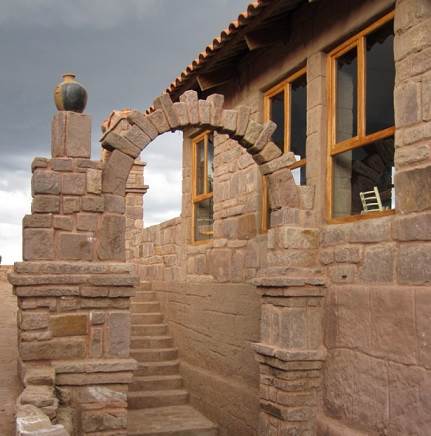High atop the beautiful, windswept altiplano of Southern Peru lies the expansive and enigmatic Lake Titicaca– the highest navigable lake in the world and the largest lake in South America. The lake splits its territory between nations, with 60% of its waters belonging to Peru, and 40% to Bolivia.
Although far less traveled than the well-touristed Machu Picchu, there are many reasons you should visit this region of Peru– whether it’s attending the colorful and lively festivals of Puno, marveling at the unique beauty of the floating islands of the Uros people, or enjoying the culturally immersive experience of a home stay on the Isla Taquile.
Isla Taquile is just one of Lake Titicaca’s 45 islands (excluding, of course, the floating islands, or Islas Flotanes). With a population of less than 3,000, it presents a perfect opportunity to witness life in rural Peru. Only 7 square kilometers in area, this small island sits just 35 kilometers from the main lake port of Puno. It is divided into six communities, each with their own mayor.

Long famous for its distinctive archways, sweeping landscapes, and brick red earth, this island is more than just a location of memorable geography. The people will likewise capture your interest as they steal your heart, greeting you not with a handshake or a kiss on the cheek, but rather by extending a handful of coca leaves (a staple in Peru) and a toothy smile.
The people of Taquile have maintained a lifestyle that is remarkably detached from modern amenities and demonstrate a remarkably strong sense of group identity. Rarely do they marry non-Taquile individuals. Red and white caps distinguish unmarried men while married men wear red ones. Unmarried women are likewise distinguished by the multi-colored pompoms that adorn their clothes while married women wear red ones.
Residents of the island speak Quechua, although the children learn to speak Spanish in school.
They live by the simple philosophy of do not steal, do not be idle, and do not lie. The fact that no police force exists on the island is a testimony to their integrity and way of life. Religion is an important part of culture on the island, as 80% of residents are Catholic.
With no horses, llamas, or cars it is not uncommon to see individuals of all ages carrying heavy loads of water or food up the numerous stairs that are prevalent all over the island. Most families live in mud-brick homes with no electricity, though some families have solar power.
Although it is certainly possible to make a day visit to the island by hiring the services of one of the captains in Puno, it is by far preferable to stay the night with one of the local families. While accommodations are simple, this method of visiting will give you the opportunity to connect with the people of the island and enjoy their cuisine all while supporting their centuries old way of life.
When Ellen and I visited back in late October, we employed the services of a guide and benefited not only from his ability to translate for us but also from his knowledge of the island. We stayed with a local family in a spare room of their home, and the women of the family prepared our meals. A storm rolled through overnight, and the sound of rain hitting the corrugated tin roof soothed us to sleep as we lay bundled in thick, wool blankets.
The highlights of our trip included a walk where we saw a pre-inca house up-close, watched a local woman use an indigenous plant to make shampoo, and admired the beauty of a storm as it swept across from the far reaches of the lake and continued on to the visible snow-capped peaks of Bolivia.
To visit the island, tourists must pay 5 soles (or less than $2 USD). If you wish to stay overnight, you can connect with a local tourist agency in Puno to arrange this service.
So if you’re the kind of traveler that enjoys getting off the beaten path or just immersing yourself in a way of life that is different from your own, we strongly recommend that you visit this important part of Peru’s culture – both past and present.
